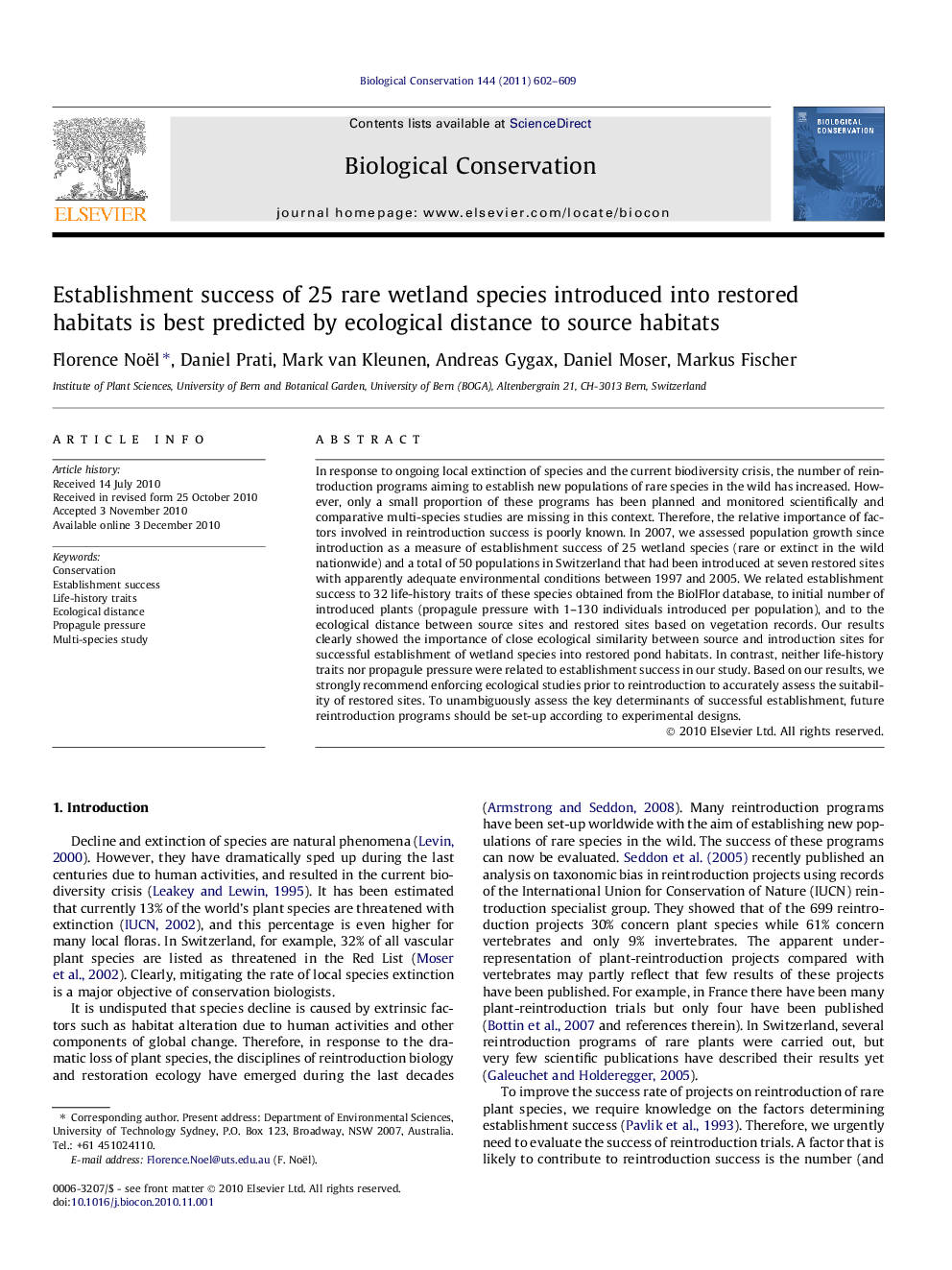| Article ID | Journal | Published Year | Pages | File Type |
|---|---|---|---|---|
| 4385722 | Biological Conservation | 2011 | 8 Pages |
In response to ongoing local extinction of species and the current biodiversity crisis, the number of reintroduction programs aiming to establish new populations of rare species in the wild has increased. However, only a small proportion of these programs has been planned and monitored scientifically and comparative multi-species studies are missing in this context. Therefore, the relative importance of factors involved in reintroduction success is poorly known. In 2007, we assessed population growth since introduction as a measure of establishment success of 25 wetland species (rare or extinct in the wild nationwide) and a total of 50 populations in Switzerland that had been introduced at seven restored sites with apparently adequate environmental conditions between 1997 and 2005. We related establishment success to 32 life-history traits of these species obtained from the BiolFlor database, to initial number of introduced plants (propagule pressure with 1–130 individuals introduced per population), and to the ecological distance between source sites and restored sites based on vegetation records. Our results clearly showed the importance of close ecological similarity between source and introduction sites for successful establishment of wetland species into restored pond habitats. In contrast, neither life-history traits nor propagule pressure were related to establishment success in our study. Based on our results, we strongly recommend enforcing ecological studies prior to reintroduction to accurately assess the suitability of restored sites. To unambiguously assess the key determinants of successful establishment, future reintroduction programs should be set-up according to experimental designs.
